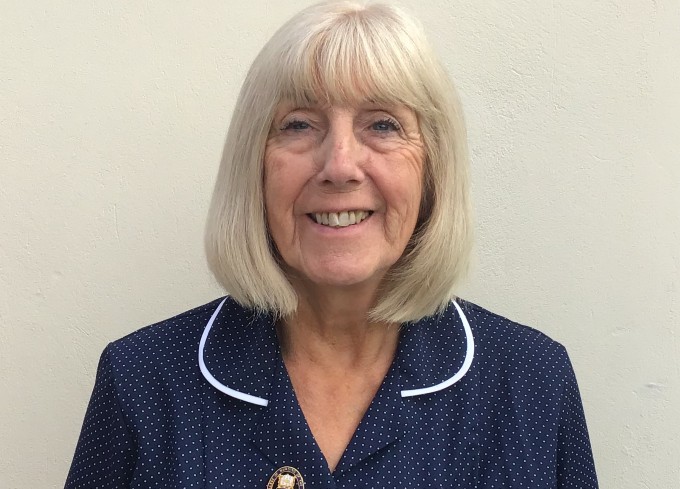As research into the long-term impact of COVID-19 continues, we explore the symptoms and how you can support your patients’ recovery
While there’s still so much we don’t know about COVID-19, a growing body of research indicates that many patients are not experiencing a straightforward recovery. Initial findings from the King’s College London COVID Symptom Study in June showed that one in 10 people were still suffering symptoms three weeks or more after their illness began, while the Department of Health and Social Care said 10% of people with mild COVID still had symptoms after four weeks.
To find out more, the National Institute of Health Research (NIHR) has launched the PHOSP-COVID study with Leicester Biomedical Research Centre. It is recruiting 10,000 people who were hospitalised with COVID-19 and following them to observe ongoing symptoms. Results are expected later next year. In the meantime, NIHR released a review in October of published evidence, patient experience and expert consensus around the long-term impact of COVID-19. The report emphasised the urgency of the problem – health care professionals need to be aware of the potential for ongoing symptoms and be ready to support people in their care.
A crucial takeaway is that the collection of symptoms we’ve been referring to as ‘long COVID’ could in fact be four separate syndromes.
1. Post-viral fatigue
Common symptoms include fatigue, aching muscles and difficulty concentrating. Researchers are looking into potential overlap with chronic fatigue syndrome. Research into other viruses could help us respond: studies into the 2003 SARS outbreak showed that around a third of patients had to reduce their physical activity levels for months after their initial infection.
2. Fluctuating multi-system symptoms
Data from the King’s College London COVID Symptoms Study showed that those with long COVID are experiencing a variety of symptoms affecting many different areas of the body: the heart, lungs, digestive system, brain and skin. They were also twice as likely to report a relapse, with symptoms returning again after completely disappearing.
3. Lasting organ damage
This does not necessarily mean permanent damage, but changes that last for a number of weeks after the initial COVID-19 infection. An Austrian study published in September indicated that six weeks after leaving hospital, 88% of patients still showed signs of lung damage on CT scans. One third showed heart damage. Those who experienced a mild case of COVID-19 could also be at risk of longer-term organ damage with reports of changes to the heart’s structure picked up by MRI scans in a small study published in October.
4. Post-intensive care syndrome
Already a recognised condition, post-intensive care syndrome describes a collection of physical and psychological issues that patients may experience after leaving the ICU. “Patients in intensive care for any reason are at risk of getting post-intensive care syndrome, then these patients experience the effects of COVID on top of that,” says RCN Professional Lead for Critical Care Suman Shrestha. “Again, it varies between patients, but they might have shortness of breath, cognitive function disorder, mood or mental health issues including post-traumatic stress disorder, chronic pain and fatigue. There’s a wide range of symptoms they might develop.”
Suman works as a consultant nurse in intensive care at Frimley Health NHS Foundation Trust and his experience from the past few months tallies with the NIHR findings. “I see patients who were in intensive care and had COVID,” he says. “You can’t put all of the patients in one category. In my mind, there are three types of COVID patients: those who stayed at home with mild symptoms; those who came to hospital for some treatment; then the third group who were critically unwell requiring intubation and ventilation in intensive care. The way you experience long COVID may depend on which type of patient you are.”
The way you experience long COVID may depend on which type of patient you are
While a long-term recovery is expected for those who were treated in intensive care, data from the King’s study showed that people who had a mild case are more likely to have a range of “strange symptoms” that come and go over an extended period. The King’s team released further research in October showing that older people, women and those who experienced a greater number of symptoms during the first week of COVID-19 were more likely to then develop long COVID.
Caring for long COVID patients
Nursing staff are likely to come across long COVID patients in different settings. Some will encounter patients in the community, others have been working with post-acute COVID patients, who are experiencing severe long-term symptoms following their hospitalisation with the virus. Among the huge range of potential symptoms, two of the most common are fatigue and breathing difficulties.
Patients and families should not be afraid to go back to the hospital or their GP
Suman highlights that the best way to treat this in long COVID patients is still being researched, but there is existing advice nursing staff can draw on. “With fatigue, the advice you would give to patients is to take things easy: pace yourself, plan your days, focus on nutrition and hydration – that is key because if they’re feeling very fatigued they might not eat and drink effectively, then you’re inviting further illness.
“On the breathing side of things, again, we don’t know exactly what impact COVID has on patients. If you look at the pathology of the disease, it could be either lung damage causing shortness of breath, or some patients with COVID get pulmonary embolism, a clot in their lungs, and that might still be causing issues for patients and would need to be rectified.”

Michelle Freeman (pictured above) is Head of Nursing at Remeo Healthcare, which is in a public-private partnership with Guys and St Thomas Hospitals, caring for people with complex respiratory needs. “With COVID, the symptoms, duration and intensity are so individualised,” Michelle says. “The key thing as patients come out of acute critical care environments is being able to support and manage post-intensive care – these patients are emotionally and psychologically exhausted. Post-viral fatigue is commonplace with so many and when you think about what their body has been through, it’s not surprising. It is taking longer for people to recover.”
Sue Houston is Chief Nursing Officer at Christchurch Group, which is currently providing post-COVID neurorehabilitation services. Sue’s multidisciplinary team includes nutrition, speech and language therapy, physiotherapy, occupational therapy, and psychological support. This holistic approach to rehabilitation is crucial, Sue says, but in some cases, patients experience setbacks that hinder this process.
Because of the fatigue and shortness of breath, people are highly likely to experience emotional impacts of the disease
“With some of our post-acute patients, there’s been a potential setback on the rehabilitation pathway because of the confusion and fatigue,” says Sue. “We know that rehabilitation is crucial, but it’s whether that individual has enough strength to engage in activities and therapy sessions.”
For all patients, attending follow-up appointments is vital. “Patients and families should not be afraid to go back to the hospital or their GP,” says Michelle. “They need those review appointments when they’re due. It’s really important that they attend those because we don’t know how long it’s going to last and we don’t know all of the after-effects.”
Mental health
Nursing staff should also be aware of the psychological impact of COVID-19 and long COVID. In November, an analysis from the University of Oxford and NIHR showed that nearly one in five people who’ve had COVID-19 were diagnosed with a psychiatric disorder within three months of contracting the virus. COVID patients were twice as likely to receive a mental health diagnosis than flu patients.
“Because of the fatigue and shortness of breath and the experience they had in hospitals, people are highly likely to experience emotional impacts of the disease, so it’s really key that they keep talking to family and friends, particularly if they’re living by themselves, and also try to do things that they enjoy to keep them in a positive mindset,” says Suman. “That’s really important. If you lose your motivation, it will be very difficult to get over that fatigue and shortness of breath. Encourage patients, if mood is an issue, to seek psychological support.”

Michelle and Sue have also observed the mental health impact of COVID-19. “We’ve started putting into place psychological first aid in the context of COVID-19 – that’s about delivering care in aftermath of emergencies, including infectious disease outbreaks,” says Michelle. “We need to consider the fear around not knowing what those longer-term outcomes might be. Everything you do, you have to take into account the emotional and psychological wellbeing of patients.”
The unique challenges of COVID-19 lockdown may also have contributed. “Another thing that’s had a profound effect is the restrictions on visitors,” says Sue. “I don’t think we can underestimate the emotional and mental pressure that’s put on.”
Learning and training
Right now, the most important thing that nursing staff can do is be aware of long COVID and the different forms it may take so you’re ready to offer patients the best care when they need it.
Talking to patients and explaining to them what COVID is, is really important
“Training and learning are the most important things for nurses out there,” says Michelle. “Get onto those webinars and online learning sessions, listen to other health professionals and hear about what’s happening in other areas of the country and the world.”
For senior nursing staff, sharing knowledge with your team is crucial, says Sue (pictured below): “Like with sepsis, you get a lot of differential diagnosis and overshadowing [with long COVID], so it’s about educating staff so that it transfers into their practice and giving them a safe forum to talk about it. We almost need post-COVID syndrome [to be recognised] so you can educate staff and ensure they’ve got that knowledge and empathy.

“When someone says ‘I’m exhausted’, you’ve got to know what that actually means – it’s not tired, it’s exhaustion from this condition. You’ve got to know the difference and build that into their care plan and risk assessment. Recovery isn’t just about the rehab and nursing care, it’s about the body healing itself as well.”
Suman is part of the multidisciplinary team that runs post-intensive care rehabilitation sessions to monitor patient progress, as well as specific physiotherapy sessions for post-COVID patients. Suman uses these sessions to talk to patients about COVID-19 and the ongoing effects they may be experiencing.
He says: “What I’ve learned in the past few months is that talking to patients and explaining to them what COVID is, is really important. When I explain to them the pathophysiology of the lung, for example, they understand why they’re short of breath, why they’re tired, why they’re feeling low. That has been really helpful. I’d advise hospitals to set up those kind of groups and services.”
Long COVID symptoms
We now know that COVID-19 is a whole system virus, so symptoms vary greatly from person to person but common ones include:
- fatigue
- respiratory symptoms such as shortness of breath or chronic cough
- heart palpitations or fast heartbeat
- pins and needles/numbness
- trouble thinking and concentrating
- gastrointestinal issues such as pain or diarrhoea
- headaches
- depression and other mental health issues
- loss of taste and smell.








